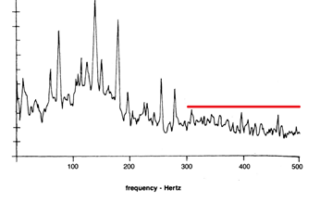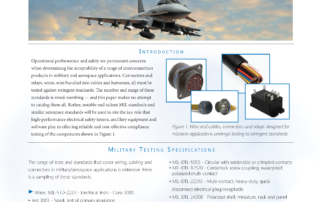Blogs
Exploring the Different Types of Aircraft Vibrations
There are two main types of aircraft vibrations: normal and abnormal. Normal vibrations regularly occur when an airplane is in flight and during takeoff and landing. These oscillating or reciprocating motions do not indicate potential defects with the aircraft or its engines and can be explained by routine operations such as flying through turbulence or extending or retracting the landing gear. With abnormal vibrations, a mechanical defect or condition is to blame. If this is not corrected, further damage and even catastrophic failure may occur. What are the causes of aircraft vibrations? The causes of aircraft vibrations include: engine [...]
How Often Should Vibration Analysis Be Performed?
How Often Should Vibration Analysis Be Performed? Once a customer takes delivery of a PBS system and learns how to use it, the next logical question is: “How often should we use it?” At a minimum, your approved maintenance program (whether it’s a program developed by your operation, or the maintenance procedures outlined by the engine/airframe manufacturer) will tell you about the intervals at which to perform a vibration analysis. Usually, there is a procedure to specify how an engine vibration analysis and balance need be only completed when squawked by a pilot or after the completion of maintenance work [...]
Get More Out Of Your Military & Aerospace Applications
When testing the electrical systems for your military and aerospace applications, you need to ensure they are ready for the job and meet all the necessary standards. These specialized systems work to keep the highly sophisticated and advanced technology housed in these applications running at full strength, which requires the right amount of power to do their jobs effectively. Having the right electrical safety and performance testing equipment on hand can help determine the overall effectiveness of your applications. […]
White Paper: Hipot Testing of Military/Aerospace Interconnect Components
Introduction Operational performance and safety are paramount concerns when determining the acceptability of a range of interconnection products in military and aerospace applications. Connectors and relays, wires, wire bundled into cables and harnesses, all must be tested against stringent standards. The number and range of these standards is mind-numbing — and this paper makes no attempt to catalog them all. Rather, notable and salient MIL standards and similar aerospace standards will be used to site the key role that high-performance electrical safety testers, ancillary equipment and software play in effecting reliable and cost-effective compliance testing of components as [...]
Weathering the storm: Keys to resiliency in MRO
Weathering the storm: Keys to resiliency in MRO By Ken Ameika It’s no secret that COVID-19 has adversely affected the airline industry, and consequently the MRO and test cell markets. But the impacts are nuanced. Commercial aircraft utilization is way down; meanwhile, freight carrier business is expanding markedly. Operators are spending less; but they still have needs, which often require quick turnaround. It’s been hard for many. But there’s good news: COVID provided lessons that we can all use to make our businesses, or our careers, more resilient to the next major disruption. Diversify Your Business Commercial passenger traffic—or [...]
MTI Instrument’s PBS ROI Calculator: See How Much Money You Can Save
Ensuring the proper operation of your aircraft engine is essential to complying with manufacturers guidelines for the safety and longevity of the aircraft. Ensuring engines are not operating outside acceptible vibration limits and operating optimally isn't just smart, it is vital to your business. Excessive engine vibration can lead to cracked turbine, fan and compressor components potentially leading to catastrophic failure. The costs of catastrophic engine failure due to an unbalanced engine can measure in the millions of dollars. As airlines push to get more and more life out of their aging fleets, the need to properly maintain the [...]
How Aircraft Operators Reduce Downtime While “Sweating the Assets”
In a recent article called “UPS Gives Old Jets New Life,” Bloomberg reports how United Parcel Service (UPS) is replacing the cockpit computers on its Airbus SE freighters in order to reduce downtime, increase productivity, and avoid large capital expenses. Known as “sweating the assets,” this business strategy is also benefitting the two aviation maintenance repair and overhaul (MRO) organizations that are performing the computer upgrades. “Doing such work,” writes Bloomberg’s Thomas Black, “is a huge potential market.” As the article explains, UPS purchased flight computers for over 50 Airbus A300-600 jets some twenty years ago. However, the memory [...]
Avionics Bus Monitoring
Avionics Bus Monitoring Customer Case The requirement is to monitor anomalies on an avionics bus that controls systems aboard spacecrafts. The customer will know typical rise times, and therefore, will look for anomalous high-voltage pulses that may occur due to sunspots or cosmic rays. An A/D card with at least 12-bits of vertical resolution is required to capture anomalous glitches for characterization. The required sampling speed is 50 KHz, on two simultaneous channels that monitor two bus lines. The input signal bandwidth is typically 4 KHz. The customer would like to write his own data acquisition application programs in [...]
MTI Instruments’ PBS-4100+ Series Training Eligible for FAA Training Credit
MTI Instruments' PBS-4100+ Series Training Now Eligible for Credit Under William (Bill) O'Brien Aviation Maintenance Technician (AMT) Awards Program ALBANY, N.Y., Feb. 23, 2021 /PRNewswire/ -- MTI Instruments, Inc. (MTI Instruments), a wholly-owned subsidiary of Mechanical Technology, Incorporated (OTCQB:MKTY), today announced that its training course on the PBS-4100+ engine vibration measurement and balancing system is now credit-eligible under the Federal Aviation Administration's (FAA's) William (Bill) O'Brien Aviation Maintenance Technician (AMT) Awards Program. With the new credit designation, MTI Instrument's course, "Vibration Analysis and Engine Balancing Using the PBS-4100 System," can earn an eligible individual up to 16 hours of credit towards AMT Awards issued through the FAA [...]
Interfacing to Offset IF Radar Altimeter
Interfacing to Offset IF Radar Altimeter Customer Case The customer is using an offset IF radar to map forest terrain density. The equipment will be mounted in an aircraft, which will also be carrying a Global Positioning System (GPS) for reference. The plane will fly at an altitude of 10,000 feet. A 512 ns radar pulse will be sent out and a return pulse will be received about 20 uS later, from which 10,000 samples will be acquired. After the pulse is received, there will be a relatively long re-arm time of about 250 to 300 uS for the [...]







